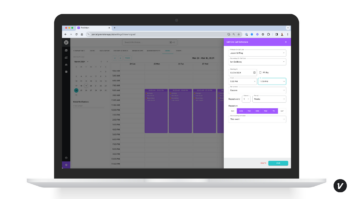At OneVision, we meet with integrators all over the country who are struggling to effectively monetize service. Selling premium service plans requires new ways of thinking and practice. However, for an industry full of successful entrepreneurs and salespeople, raw ability is clearly not the gating factor. So what is it that is holding them back?
Overwhelmingly, we’ve found in our day-to-day work of helping integrators that there is one key ingredient missing—confidence. The willingness to lead sales discussions with the critical role that service plays in the ownership experience, as well as the conviction to tell existing clients that your approach to support is changing, is the single biggest determinant of success when it comes to monetizing service. Here is how taking a bolder approach by leading with service can not only help you generate RMR, but also make your company stand out from the competition and sustainably thrive while doing so.
Related: Automate Your RMR Business!
Brushing Service Under the Rug
Gaining the confidence to effectively present premium service contracts is a challenge. Unlike physical products, selling the value of service requires the ability to convey the value of something intangible. Adding to this challenge is the fact that there is little precedent for selling premium service plans in this market. This means that, in addition to learning how to tell a compelling story around your service offerings, you must also be willing to pitch something your prospective client may be expecting for free, whether based on previous experience or on how your competition positions service.
These factors create a natural hesitancy to discuss service in general with prospective clients, let alone positioning premium plans to them. In our experience, this hesitancy stems from two general places:
- Fear of scaring the client: I don’t want the client to think that their system is never going to work. Plus, my competitors might use this against me by saying their systems are “bulletproof” so they don’t need to sell service plans, reinforcing the prospect’s fear about doing business with me.
- Fear of being seen as a “nickel-and-dimer”: I don’t want my clients to feel like I am bilking them. They are already spending a ton of money with me, so a recurring monthly bill might feel chintzy. My competitors may reinforce this notion by stating that they provide the same level of service for free.
- Fear of taking something away: I’ve been giving my clients after hours support and priority response for years – if something doesn’t work I’m going to help them as fast as I can. Telling the client they can’t have that unless they pay for it doesn’t sit well with me.
As a result of these fears, many integrators treat service as something of a taboo during their sales process. Ironically, by doing so, they only succeed in reinforcing the misguided client beliefs that “bulletproof” reliability is to be expected and paying for a premium level of support is not.
Don’t fall into this trap.
Turn the Tables
What if you could tell a simple story to your prospective clients that changed your clients’ entire perspective about the value of service? What if instead of worrying about prospective clients looking at you sideways for offering premium service plans, you could make them look sideways at your competition for not doing the same?
You can.
All that is required is the confidence to anchor on the fundamental importance of service and support. In short, instead of shying away from service or treating it like an afterthought, you simply have to be willing to tell a different story – one that sounds something like this:
“Service and support will be needed. It doesn’t matter who you buy this system from or how much you spend on it. Our service plans are built from the ground up exclusively to ensure that, when these inevitable issues do arise, we’ll be there to take care of you. Every time. No exceptions.”
This approach works. We know it works because, at OneVision, our legacy business (which we call Tech Member Services or “TMS” for short) continues to prove it to the tune of over $100,000 a month in RMR.
There’s no magic to this process. Just a ton of hard work and a simple two-step formula:
- TMS has the infrastructure, processes, and a team of dedicated service professionals needed to provide the best technology support and service available, bar none.
- They have the confidence to anchor on this value proposition starting from the very first client meeting.
The TMS approach of leading with service typically sounds something like this:
“We are not the same as our competition. We believe in putting service first. Everything is designed, engineered, and installed with an eye towards service. We understand that technology comes second to your lifestyle, and we have built a team to manage your technology for you. We respond quickly, look out for the big picture, and have the experience to expect the unexpected. This project is simply the starting point to a lifetime relationship with us and your technology. Our role is to ensure that ongoing experience is the absolute best that it can be.”
While design and project management work are part of the TMS mix, the vast majority of the revenue they generate comes from ongoing service “memberships,” which have a minimum monthly fee. This formula has been so successful that TMS stopped doing “traditional” integration work (e.g., equipment provisioning, installation, and programming) completely, instead opting to partner with local integrators for that portion of the project scope.
The TMS team will not accept a project if the client doesn’t agree to a minimum monthly fee from the start. The thought process being that, if a client doesn’t see the value in a premium support and service experience, they aren’t a good fit. Generally, these are the types of clients who have unrealistic expectations and who burden teams with excessive demands and a complete lack of gratitude.
Dare to Be Different
The decision to put service front and center during the sales phase requires a willingness to experiment for most sales professionals who are accustomed to approaching the topic at a surface level, if at all. However, doing so is fundamentally important to your success with monetizing service.
Take control of the narrative around service and be bold in your presentation. Make your prospective client understand the vital role that service and support will play in their overall technology experience. Then, demonstrate how this belief has driven you to create a premium service program designed from the ground up to ensure they are always taken care of.
Finally, don’t shy away from the fact that your competitors may not offer paid options. Daring to state that you are different and confidently demonstrating why your approach is in their best interest will win the day (and put your competitors on the defensive).
And for existing clients, let them know that your clients have all been asking for improved support offerings and that you have made an investment in your service department to deliver. Now your clients can have guaranteed access to 24/7 basic support, priority advanced support, and system monitoring – but it will cost a monthly fee.
Accepting the status quo that service is a taboo means you have to play the same game everyone else is playing. Instead, turn that assumption on its head and lead with service. Doing so shifts the entire conversation, allowing you to differentiate your company and finally gain meaningful traction in the quest to monetize service.







